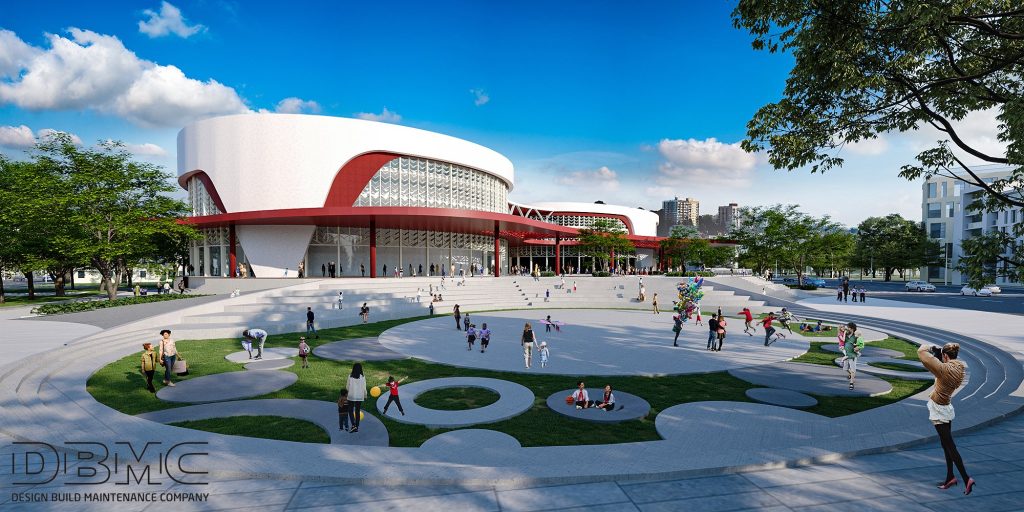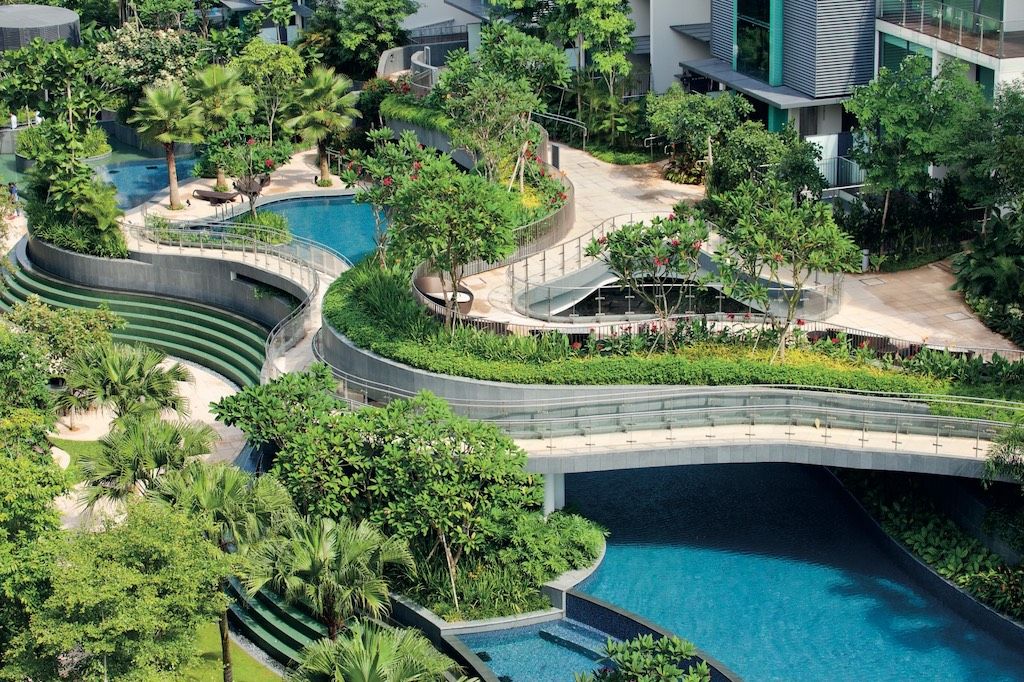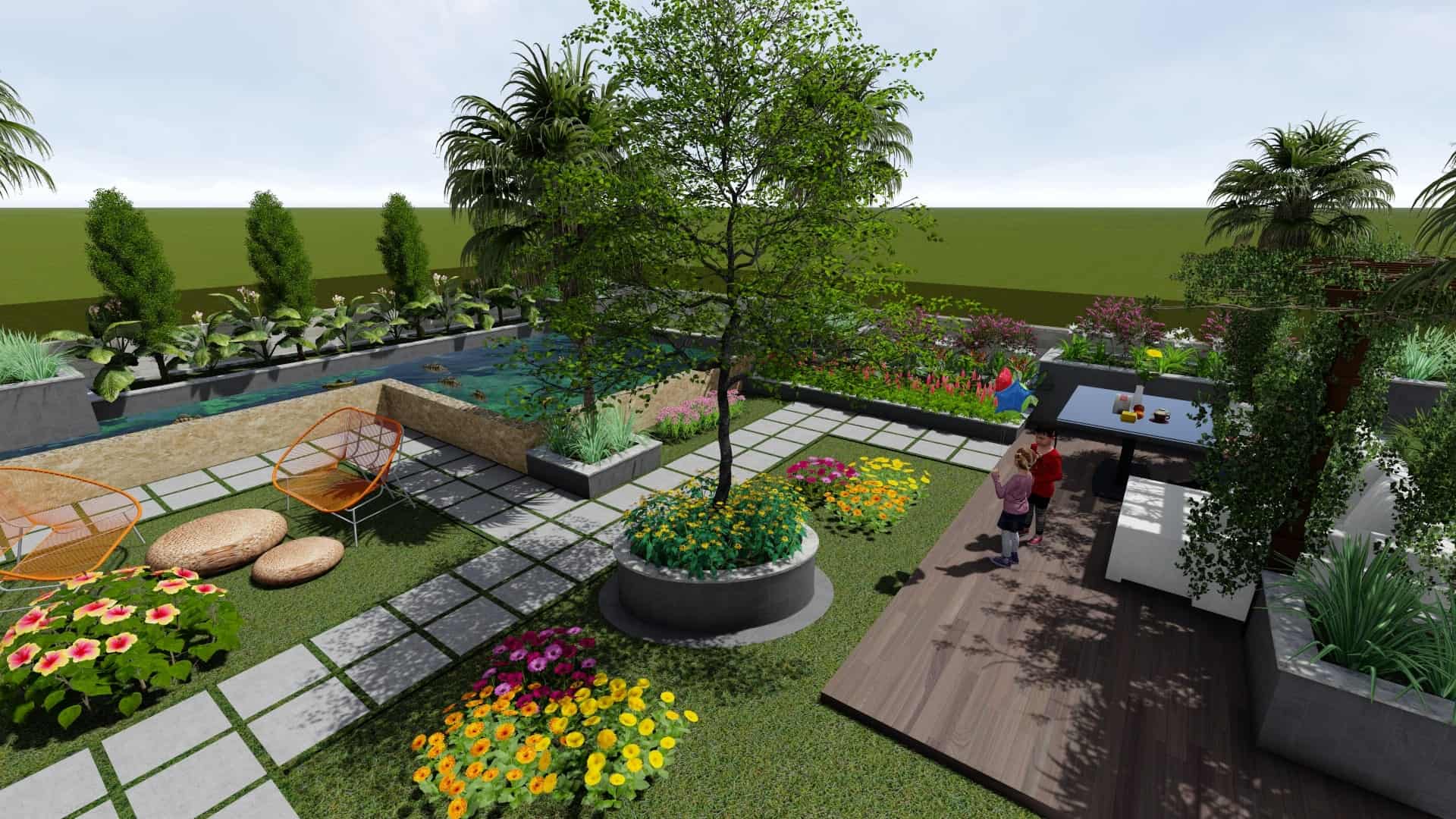- Hotline (02556) 292929
- Email [email protected]
- Address No. 6 Thien Phat Street, Truong Quang Trong Ward, Quang Ngai City

What is landscape design? Principles and importance of landscape design
Landscape design aims to bring open, comfortable and modern space to projects. To learn more about this term as well as refer to the most popular designs today, don’t skip the article below.
1. What is landscape design?
Landscape design is understood as the creation and construction of empty open space of a building. The creative way that is often applied is to arrange, arrange or come up with plans to install materials, objects, shapes… From there, it aims to bring harmony and beauty to the space.
In fact, landscape design has appeared in the world many years ago. Specifically, it originated from the profession of taking care of ornamental plants in French palaces in the 17th century. After that, it spread to European countries, associated with works related to religion and palaces. However, in Vietnam, this term is still quite new. Accordingly, landscape design includes a number of main items such as: lighting design, garden construction, planting garden trees, creating garden miniatures, exterior construction…
2. Principles of landscape design
Beautiful landscape design requires the practitioner to follow certain principles and principles.
– Consistency
Unity is the orderly and consistent repetition of a combination of elements. Factors mentioned here include: type, texture, size, height, color of trees or groups of plants, stones or decorative objects in garden design and construction. Ensuring consistency in landscape architectural design will help create a certain style and theme, thereby enhancing the aesthetics of the landscape.
– Simplicity
Simplicity aims to highlight the theme of garden landscape design. At the same time, streamlining decorative materials will help viewers focus more on the important points of the landscape.
– Natural transition
The principle of natural transition is applied to avoid too rapid and sudden changes between spaces in the garden. Therefore, when designing a beautiful garden landscape, the designer needs to ensure that the spaces are always connected and harmonious in a unified chain.

– Balance
Balance is considered in terms of how the elements of the landscape relate to each other. Depending on each type or color, the designer arranges and arranges them in balanced positions, ensuring connection with each other. It is necessary to research carefully before proceeding to arrange it properly, avoiding fragmentation and unbalance that makes the space confusing.
– Size ratio
At the beginning of landscape design, another factor of concern is the structure and size ratio of objects used in the landscape. Because, everything on the design is determined based on the size correlation with the real object. Therefore, in order for the real landscape to be balanced and harmonious, designers need to pay attention to design proportions.
– Calculate movement and perspective
Movement and perspective affect each person’s perception when contemplating landscape design. Therefore, make sure that the look and layout of the space creates an appropriate flow for the garden landscape, giving a feeling of the garden’s design style, which is youthful and generous. mineral or simple.
3. Why is landscape architecture important?
Landscape design is not simply about making the yard more beautiful. In fact, the importance of landscape design goes beyond aesthetic improvement. But even more than that…
– Minimize air pollution
Landscape architecture with many trees contributes to improving air quality around the area where you live and work. Lush green foliage purifies pollutants and toxic chemicals without using electricity or machinery. The more trees, the less air pollution.
– Prevent flooding and erosion
Erosion does not spare anywhere, whether it is an indoor garden, a resort landscape, a park, etc. And the same goes for floods. Without a solid landscape plan or project, the yard you’re passionate about could be swamped with mud. Trees were even dislodged, endangering everyone. So, landscape design helps prevent these hazards.
– Maintain the ecosystem and preserve nature
Landscape is not only a place for us humans to enjoy an ideal life. Above all, this is also where all living things reside and develop. Landscaped spaces provide a natural, pest-free living environment. Only when trees and microorganisms grow strongly will the life of the landscape last longer. And the direct beneficiaries are of course humans.

– Providing outdoor entertainment services
Landscapes are a great means of outdoor recreation. Enjoying the scenery and breathing fresh air is the way you can enhance your life. In addition, other services such as children’s play area, exercise yard, or outdoor BBQ,… are all conveniences that landscape design can bring.
– Reduce impact on the environment
To provide enough nutrients for trees and flowers in the garden, many people need fertilizer. But most fertilizers sold on the market are made from chemicals that are harmful to the environment. For example, when it rains, leftover fertilizer seeps into the soil, affecting groundwater sources, endangering native plants and animals. It also indirectly affects people’s health. Landscape architecture always considers sustainability for every project.
– Enhance spirit and health
Landscape design always focuses on the interests of users. Besides providing beauty and helping people enjoy the experience, the landscape also contributes to creating a relaxed soul and significantly improving mental health. That’s why more and more people encourage “greening” their living, studying, playing, and working spaces.
Landscape architects can also run projects on urban and rural planning, spatial planning, land planning, ecosystem planning and design, housing planning and design, and analysis. Society and urban design…




